



Pocket Constitution Playlist
15 items
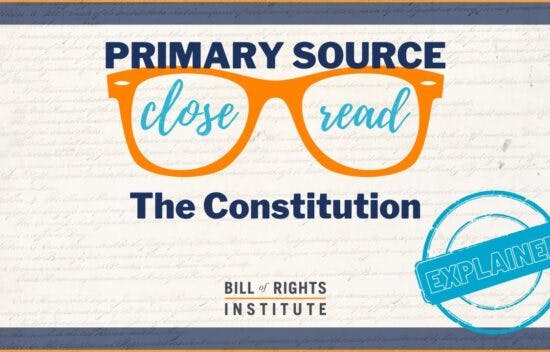
The Constitution Explained | A Primary Source Close Read w/ BRI
Video
Video
17 Min
How is the U.S. Constitution structured? In the newest episode of our Close Reads: Explained series, Kirk tackles the Constitution and explains its biggest concepts to you. What does the Constitution of the United States teach us about the government it defines?
17 Min
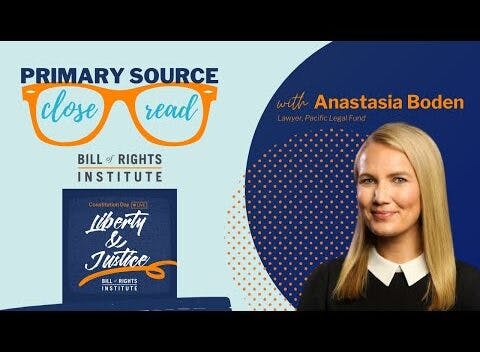
Why Does the Constitution Matter? with Anastasia Boden | BRI’s #ConstitutionDayLive
Video
Video
20 Min
Why does the Constitution matter? In this special edition of Primary Source Close Reads, Kirk Higgins is joined by Anastasia Boden, practicing Constitutional lawyer at the Pacific Legal Foundation, to discuss the 9th and 14th Amendments to the United States Constitution. How have they been interpreted and used in Supreme Court decisions? Why are these Amendments--and the Constitution as a whole—so important to us today?
20 Min
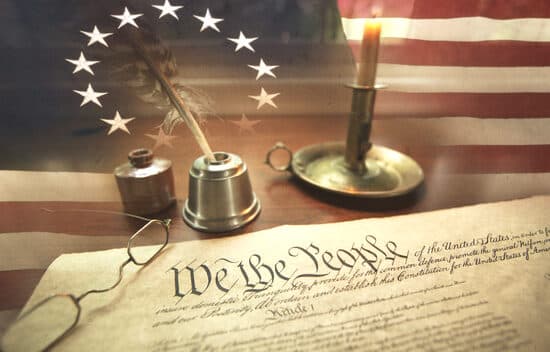
The Constitution
Primary Source - 8564 Words
Primary Source
8564 Words
The Constitution was written in the summer of 1787 in Philadelphia, Pennsylvania, by delegates from 12 states, in order to replace the Articles of Confederation with a new form of government. It created a federal system with a national government composed of 3 separated powers, and included both reserved and concurrent powers of states.

The Constitutional Convention (LLPH)
Essay - 3622 Words
Essay
3622 Words
What compromises were made at the Constitutional Convention?

The Ratification Debate on the Constitution
Essay - 3192 Words
Essay
3192 Words
Why were some Americans opposed to the Constitution?
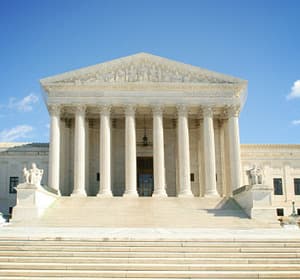
Separation of Powers with Checks and Balances
Lesson - 5 Activities
Lesson
5 Activities
85 Min
The Founders understood the principle expressed by the British historian, Lord Acton, “All power tends to corrupt; absolute power corrupts absolutely.” Through the complex system of checks and balances developed in the U.S. Constitution, they sought to assure that no person or branch of government could exercise unrestrained power. As James Madison advocated in Federalist No. 51, ambition should counteract ambition in a fashion that advances the public good.
85 Min
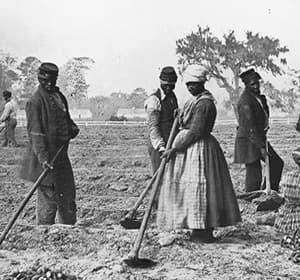
Essay: Slavery and the Constitution
Essay - 2344 Words
Essay
2344 Words
Today there are few more controversial topics in the study of American history and government than the issue of slavery and the Constitution. On the surface, the Constitution seemed to protect slavery in the states, prohibited Congress from banning the slave trade for twenty years, and required that fugitive slaves, even in the North, be returned to their masters. Because of these apparent constitutional protections, a bloody Civil War was fought to free the slaves and win ratification of the Thirteenth Amendment to end slavery in the U.S. forever. The Constitution, therefore, in the eyes of some scholars, seems to be a contradiction to the universal ideals of liberty and equality in the American Founding and the Declaration of Independence which proclaimed “all men are created equal” and endowed with “Life, Liberty, and the pursuit of Happiness.”

Is the Constitution a Proslavery Document?
Activity
Activity
40 Min
Did the Framers of the Constitution draft protections for slavery in the document? Or did they provide mechanisms specifically to put the institution on the path of extinction? Gordon Lloyd and Stuart Leibiger debate this question.
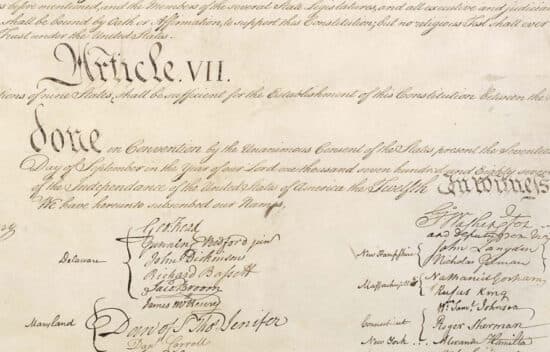
The Constitutional Powers of Congress
Lesson - 6 Activities
Lesson
6 Activities
55 Min
The national legislature created by the Articles of Confederation lacked sufficient powers to govern the country properly. The Constitutional Convention of 1787 created a stronger Congress with adequate powers to govern. The legislative powers were enumerated, or listed, in Article I, Section 8, whereas Article I, Section 9 enumerated powers which Congress was constitutionally restricted from exercising. Article VI made constitutional congressional laws and treaties part of the supreme law of the land.
During the 1787-1788 ratification debate over the Constitution, the Federalists defended the strengthened, though limited, legislative branch and its relationship to the executive and judicial branches. The Anti-Federalists were critics of the Constitution including the Congress because they argued that it had unlimited powers and would destroy liberty.
55 Min

Essay: Elections
Essay - 2430 Words
Essay
2430 Words
Elections have consequences. They decide who holds power and therefore the laws that we live under. But they also reflect principles of federalism and consent of the governed, as well as the complexity of the American system.
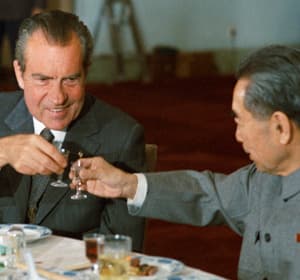
International Relations and the Constitutional Separation of Powers
Essay - 1487 Words
Essay
1487 Words
In 1787 the Constitution granted significant new powers to the central government, including those traditionally held by sovereign nations. In response to Anti-Federalist concerns about a too-powerful central government, James Madison explained in Federalist No. 51 that the new system of government was designed to work with human nature.

Essay: The Structure of the National Government
Essay - 1596 Words
Essay
1596 Words
The Framers thought the best way to protect the rights of citizens would be through a government powerful enough to fulfill its constitutional obligations yet limited enough to prevent it from encroaching on the rights of individuals. A large national republic that divided power horizontally (within governments) and vertically (among different levels of government—local, state, and national) seemed the best way to achieve their goals.
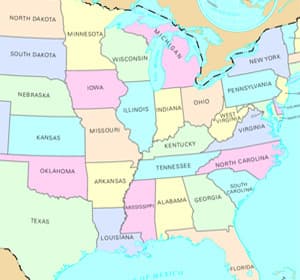
Essay: Federalism
Essay - 2242 Words
Essay
2242 Words
Through the Constitution’s system of federalism power was divided between national and subnational governments allowing citizens to decide local questions for themselves. This decentralization he contended draws individuals out of private life and compels them to civic engagement.

